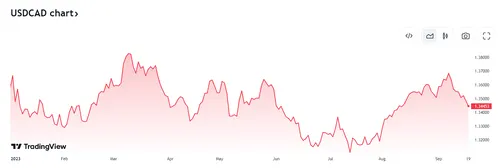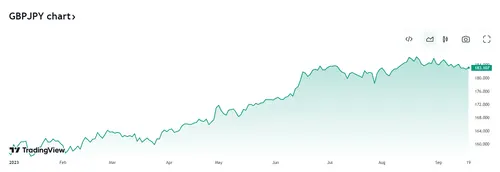Our partner, XM, lets you access a free demo account to apply your knowledge.
No hidden costs, no tricks.

The forex market is home to hundreds of currency pairs that are traded by millions of people on a daily basis.
Some of these currency pairs are much more popular than the others, and are called major pairs, such as EUR/USD, USD/CHF, USD/JPY, and GBP/USD.
However, these currency pairs, while they all involve the U.S dollar, do not perform similarly on the market, and some, such as EUR/USD and USD/CHF, have a negative correlation to each other.
In the forex market, correlations between currency pairs arise from geopolitical factors and investor sentiment. For instance, the Swiss franc (CHF) is largely seen as a safe haven currency for investors in the European Union, which is why they invest heavily into the CHF/USD and CHF/EUR pairs when the euro is experiencing above average inflation.
This makes the two major pairs negatively correlated.
This opens up new avenues for traders to structure their trading strategies around positive and negative correlations between currency pairs and use them as a hedging mechanism against market volatility.
If you would like to know more about forex correlations and how to structure a strategy around them, this Investfox guide is for you.
Currency pairs on the forex market are not completely independent of each other. Some pairs move in the same direction, while others move in the opposite. These are correlations caused by economic and geopolitical factors and are a key characteristic of the global forex market.
Forex correlation strategies involve analyzing the relationships between different currency pairs in the foreign exchange market.
By understanding these correlations, traders can potentially make more informed trading decisions and manage their risk more effectively.
The forex correlation formula is calculated using the following formula:

Where:
To calculate the correlation coefficient between two currency pairs:
The resulting value of r will be between -1 and 1. Here's how to interpret the values:
Forex traders may use correlations as a hedging strategy. This can range from simply allocating some of their capital to negative correlated currency pairs, to buying call options on one pair and put options on another positively correlated pair.
For example, if they are long on EUR/USD and expect it to rise, but also expect GBP/USD to fall, they might go short on GBP/USD to offset potential losses.
A popular long-term strategy is to go long on EUR/USD and USD/CHF despite their negative correlation. This allows for a hedged long-term position for forex traders.
Correlation analysis can help traders diversify their portfolios. If two currency pairs have a strong positive correlation, holding both may expose the trader to higher risk, as they are essentially trading the same movement twice.
By investing in currency pairs with different degrees of correlation, traders can diversify the overall risk exposure of their portfolios.
Luckily, traders do not need to calculate the correlation coefficients for each individual currency pair, as this is data that is widely available on the internet.
Traders may use correlated pairs to confirm their trading signals. For instance, if they receive a buy signal on EUR/USD, they might check if GBP/USD shows a similar signal.
If both pairs confirm the buy signal, it may provide more confidence in the trade.
However, it is important to note that relying solely on correlations to confirm buy and sell signals is not a viable strategy and other technical indicators are essential in generating reliable signals.
To better understand how forex correlations work, we can look at examples of positive and negatively correlated currency pairs to see how hedging and diversification works using forex correlation coefficients.


The primary difference between USD/CAD and GBP/JPY that makes these currency pairs negatively correlated, is their base currencies. The USD is considered a safe haven currency and is the most influential currency on the market. On the other hand, GBP is a currency that is more sensitive to economic shifts.
In the first case, the base currency is much more stable than the quote currency, while the GBP/JPY pair is the opposite.
Reliance on the correlations between currency pairs to make trading decisions comes with its limitations and advantages, which are important factors to consider to use correlation data to its fullest potential.
It must be noted that keeping track of forex correlations is not enough to construct a consistently profitable forex trading strategy and a multitude of indicators are required to generate reliable buy and sell signals.
Our partner, XM, lets you access a free demo account to apply your knowledge.
No hidden costs, no tricks.
Currency pairs on the market are correlated with each other to a degree. Some have a positive correlation and move in the same direction, while others have a negative correlation and move against each other.
While a perfectly uncorrelated forex pair is impossible to find, pairs like EUR/JPY and GBP/USD are not characterized by any major correlation in terms of performance.
No. Forex correlation coefficients fluctuate as time passes and market conditions change. Many things can affect the correlation coefficient, such as inflation rates of the base and quote currencies.